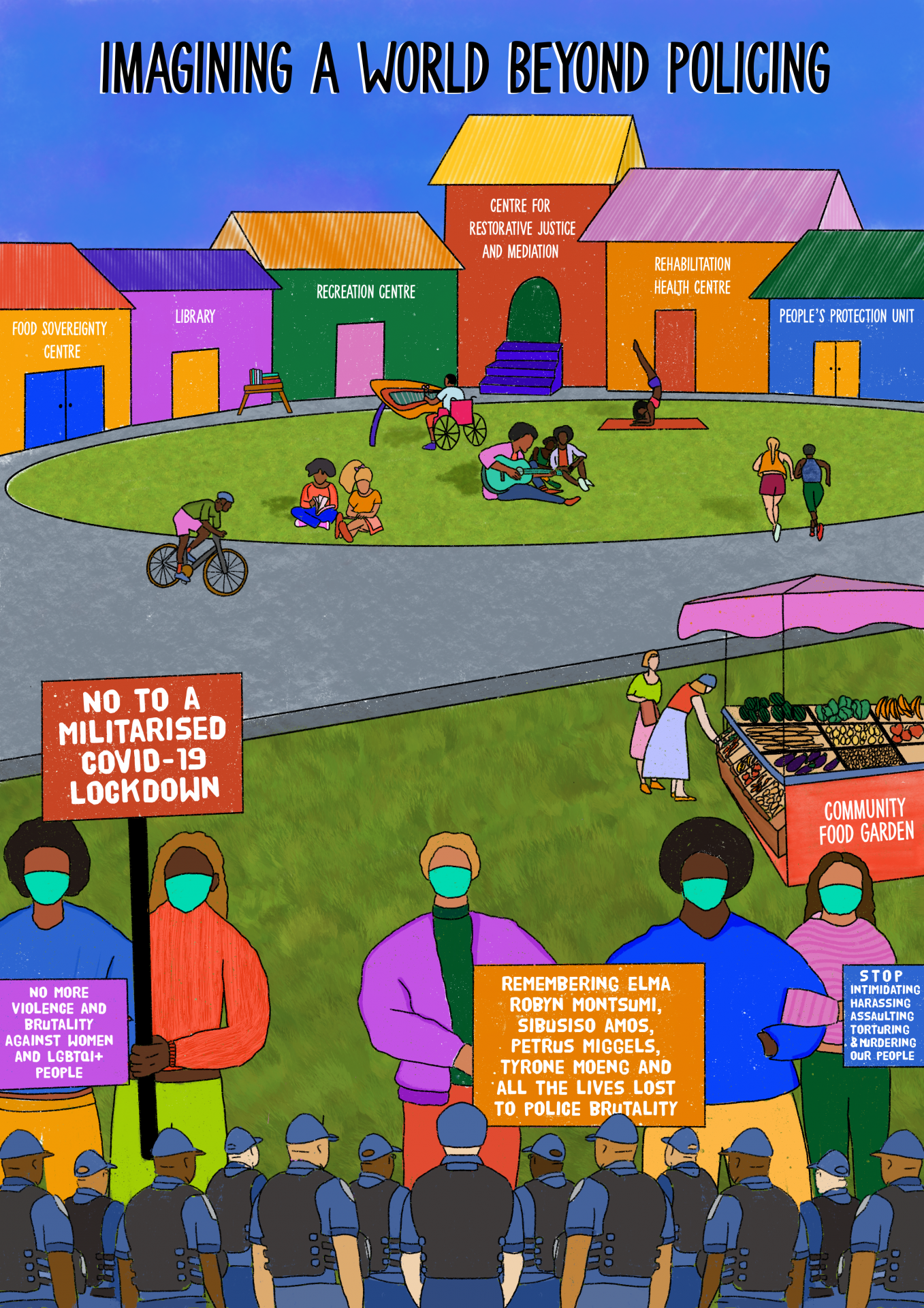This poster was featured in Workers World News Issue 116.
Poster and words below by Mikayla Boorany (Instagram @mikaylaboorany):
“In 2003, Arundhati Roy wrote: “Another world is not only possible, she is on her way…on a quiet day, if I listen very carefully, I can hear her breathing.” At the beginning of this year, in 2020, Roy wrote: “Historically, pandemics have forced humans to break with the past and imagine their world anew. This one is no different.” It is these words – by the great Arundhati Roy, and many other giants like Angela Davis and Beth E. Richie, who have for years encouraged us to not only imagine a world that cares, but to imagine that a world that cares is possible – that inspired my piece: ‘Imagining a world beyond policing’.
First, I provide a context of some of the critical issues that are currently plaguing our communities today. This is done through the depiction of mask-wearing, socially-distanced picketers. These community members on the frontline are critiquing issues of gender-based violence and police brutality – which are both menacing issues that have been exponentially exacerbated during the Covid-19 lockdown. Then in the background, I provide a blueprint for our future. ‘Imagining a world beyond policing’ is a look into what our communities could look like without prisons and policing.
The abolition movement calls for alternatives to these violent institutions by providing sustainable solutions to the socio-economic problems in our society. This is envisioned in my piece through the provision of services like a community food garden and a food sovereignty centre which could help alleviate issues of hunger and nutrition, through an environmentally conscious approach. The increased provision of funding to libraries and recreation centres can help solve issues of illiteracy, ennui and provide a safe space for active living and community engagement. Building safe and well-resourced rehabilitation health centres, centres focused on restorative justice and community protection units provide our communities with safer and realistic alternatives to incarceration and policing. In a world that is currently filled with so much pain, violence and brutality, the seemingly simple act of people being able to exercise, make music and experience joy, seems to be a radical act in itself.
The usage of bright colours is intentional and symbolises that joy and safety is possible, and that a better life is ‘on her way’.”
